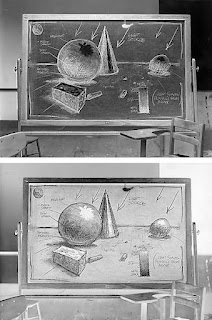Here are some of my 5x4 negatives so far which I have scanned in, both black and white and colour.
This negative has some scratches which you can see close-up. This slightly ruins the photograph however, I am pleased with the outcome of this image as I think it has a good mid-length composition. I am also more confident using the 5x4 camera and will be able to progress with more experience.
I took the photograph with a brick background as I thought the subject stood out more especially her face. I also did a close-up version whilst I was experimenting with the De Vere whilst printing.
This photograph is a full-length shot as you can see the subjects full body as well as a lot of background. Personally I don't like the colour of the background as I feel that it takes the focus away from the model and is too distracting. However I do like the composition.
This photograph has taught me to be more careful in the future about negatives being exposed. Timing is key when using a 5x4 camera and also the order that things need to be done to ensure the negative will come out correct. However if the photo had come out as I planned the background would have been a perfect contrast and colour to her outfit and skin tone. Strangely I think the photograph looks quite cool with the exposed corner however it was a genuine mistake.
Similarly to the other photograph above with the green background, I think that the colour is far too distracting and takes the focus away from the subject. However I like composition. This photograph also was taken with the camera on a slight tilt as you can see his head is slightly out of focus and his legs are fully in focus. These small errors are what I need to be aware of for my final three shots.
This black and white photograph was taken before I started experimenting with colour. I really like how the photo is black and white because I feel the viewer is not too distracted by colour and therefore focus' more attention on the models features. This is a close-up head shot, as you can see the background is blurred making her face the main focal point.
I love the eye contact with the model because I feel it portrays a real intense mood. I was pleased with the outcome of this shot.
This is another one of my black and white negatives, again I feel the negative came out well in terms of sharp focus and composition. It is a mid-length shot, I used a 150mm lens.
I love this photograph. I think the photograph itself gives a positive mood, as the subject has a happy expression and also a sense of movement as her hair is blowing in the wind. I would like to reshoot this in colour because I think it would give the photograph more life.
This photograph was taken using black and white yet again. This was one of my first portraits experimenting with the 5x4 camera.. as you can probably tell my problem was getting the photo in focus. However, I am glad I made this mistake because I now feel more confident using the camera focusing. This shot would have been quite a intense close-up if it came out correctly. Learning from my mistakes is progress.




















































